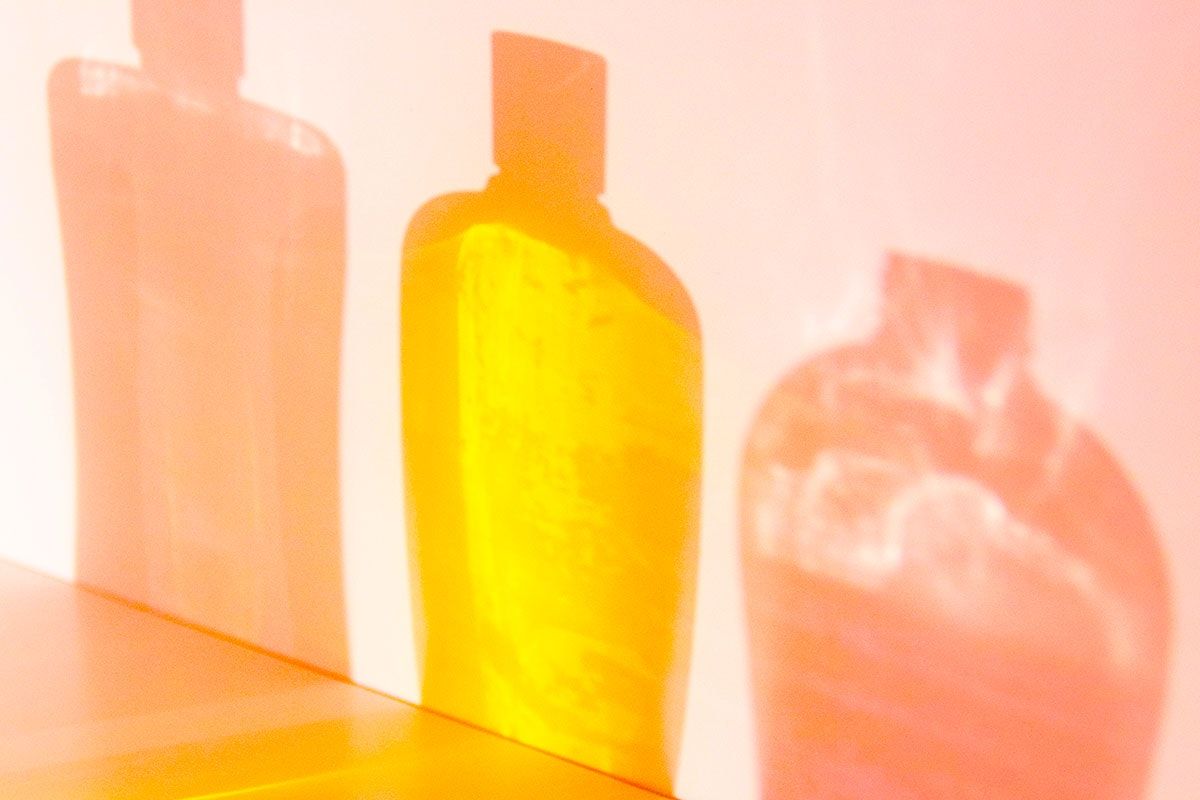
In 3000 BC, Babylonian courts contained multiple bathrooms with clean running water and soap made from animal fats. It was believed that grooming separated humans from all other animals. In India, routine hair care products have been around for millennia, and people would boil soapberries with a mixture of herbs and fruits, and then strain the concoction for an effective, lathery shampoo. Fast forward centuries later, when in the 1800s, early colonial traders in India were introduced to the hair and body massage called champo, brought it back to Britain, and thus, the origin of the modern word shampoo was born. 100 years later, Hans Schwarzkopf opened a drugstore focusing on hair care products, while Frenchman Edouard Pinaud introduced conditioner at the World Fair (mostly to soften moustaches and beards).
So, it's clear the act of cleaning and softening our hair follicles has been around for a while, but why do we really use shampoo and conditioner? Shampoo is meant as a cleaning or foaming agent to wash impurities out of the hair, while conditioner is said to reduce the amount of friction caused to strands of hair during brushing, styling or de-tangling. Everyone's hair is a little (or a lot) different and not all hair types require the same type of shampoo or conditioner. That's why these days, it's hard to not get overwhelmed when you see dozens of options in the hair care aisle of the pharmacy.
Given all these choices, we should be able to find products that clean our hair without contributing to the plastic pollution or the toxicity problem, right? Turns out, that simple ask is harder to answer than we thought. Here's the breakdown.
Water
Liquid shampoos and conditioners are made of 80% and 95% water, respectively. Guess what? It's pretty likely that your shower or bath or bucket or hose already has water in it! A concentrated shampoo bar uses the water in your shower to create the same effect as the liquid bottled stuff, saving water AND fuel in transportation.
Ingredients
Surfactants are why shampoos make suds or lather. Comment below on where you've seen sudsing in nature. Trick question - it doesn't naturally occur. Sudsing is created by a chemical reaction or agent and, while surfactants aren't toxic to humans (unless they get in your eyes or mouth in large quantities), they're often harmful to aquatic life. Same with emulsifiers, found in conditioner, that help combine oil and water so conditioners don't separate. Siloxanes are effective at softening and smoothing, but they don't break down as much within the environment. The best options are products without parabens, synthetic fragrances, or anything from formaldehyde. These surfactants, emulsifiers and preservatives found in shampoo and conditioner don't have high enough levels of toxicity to show scary long-term effects in humans, so if you're going to ease your transition and want to take baby steps, we suggest focusing on reusable or zero-waste packaging instead.
Packaging
Shampoo and conditioner bottles make up a large percentage of the plastics found in our water streams, so choosing alternative packaging or bars is ideal. Plus, one standard bottle gets you between 30-40 washes, while a bar can be used 80-90 times. Save water, plastic, and money? Sign us up. If you can't find a good shampoo bar, look for refillable shampoo and conditioner in 100% recyclable, aluminum bottles or plastic that is post-consumer recycled.
Cruelty-Free
Nowadays, there are dozens of ways to ensure products are safe without testing on innocent animals. The reason so many companies still test has mostly to do with regulations in China that require testing on animals. If a company wants to sell its products in China, animals are at risk. Our friends at Ethical Elephant broke the complexities down for us here. Essentially, the Chinese government conducts mandatory animal tests on all cosmetic products imported into the country, so even if a cosmetics company doesn't test their products or ingredients on animals, if they sell their products in China, they cannot fully be considered cruelty-free. Look for the Leaping Bunny or PETA certification to ensure you're choosing products that are not tested on animals.
Routine
The best way to lower the environmental impact of your shampoo and conditioner is to wash your hair less often. Washing your hair every single day will likely leave your hair greasier in the long-run and make you dependent on shampoo and conditioner regardless of the ingredients. Your scalp has a biome like the rest of your body and natural oils are a part of that, so conventional shampoo may be stripping away these natural oils and replacing them with buildup and residues.
Waste
If you do use plastic bottles, make sure they're recycledand not thrown away with your other non-recyclable bathroom waste.
Ancient Egyptians skipped hair care all together, shaving their heads and donning wigs to avoid lice. Those in ancient Greece would use olive oil as conditioner, and Indigenous people in the Andes Mountains would save the foamy water they used to rinse quinoa to clean their hair. Next time you're in the shower, we hope you take time to appreciate how far we've come and the modern luxuries science has afforded us.
Want to see science-backed sustainability ratings on all of your fav products?
